Garden Edibles: Success Secrets
Discover the keys to growing a successful edible garden, plus get tips on getting started & top picks for where to buy heirloom seeds.Early spring is a great time to get a jump-start on the edibles in your garden. Whether you live on a sprawling estate or in a high-rise condo, there is opportunity to grow veggies and herbs you can use in a fresh garden salad or your favorite cocktail. In early spring many cool-climate gardeners find themselves at an in-between stage, but there are some garden tasks you can complete that will ensure you are ready for planting with the time arrives.
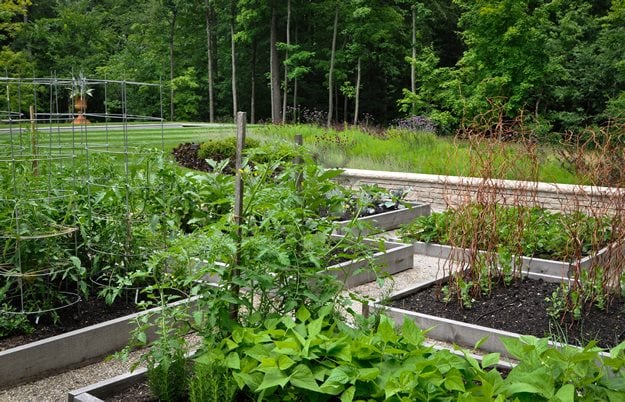
A bountiful vegetable garden I designed for a client two years ago. The raised planters are constructed from untreated oak and filled with a soil/leaf compost mix—wonderful for producing fresh, juicy produce. (Photo by Nick McCullough)
Select what to grow and purchase your seeds.One key to successful vegetable gardening is planning ahead and knowing what you want to grow—more importantly, knowing what you want to eat. Seed catalogs start showing up in our mailboxes in January, and the daydreaming begins. The beautiful photos suck us in, and soon we’ve selected enough seeds to fill a half-acre urban farm. We’ve all been there. It’s like grocery shopping when you’re hungry—not a good idea. Speaking from experience, it’s important to honestly think about what you and your family want to eat and have the time to devote to growing.
I am a huge fan of starting my veggies from seed. Why? Most importantly seeds offer variety. My family and I really enjoying growing heirloom seeds…we love the history, the taste, and the color they offer. After years of ordering I have compiled a list of tried-and-true seed companies that offer amazing variety.
- Baker Creek Heirloom Seeds is a great place to start. Their beautifully photographed catalog provides a wealth of knowledge and inspiration. From their wide selection of tomatoes to the fun and funky recipes, this catalog does not disappoint!
- The second seed destination has to be Hudson Valley Seed Library. I was first drawn to Hudson Valley by their beautifully designed seed packets—the good marketing sucked me in. One of my favorite seeds they offer is the Tiny Tim Tomato—cherry tomatoes the size of red currents and amazingly sweet. This is the perfect tomato to grow on a small balcony in a planter.
- The last two places I really enjoy ordering seeds might come as a surprise: Amazon and Etsy are a great place to buy some hard-to-find seeds. I know is sounds weird, but try it. You’ll be amazed at what you find.
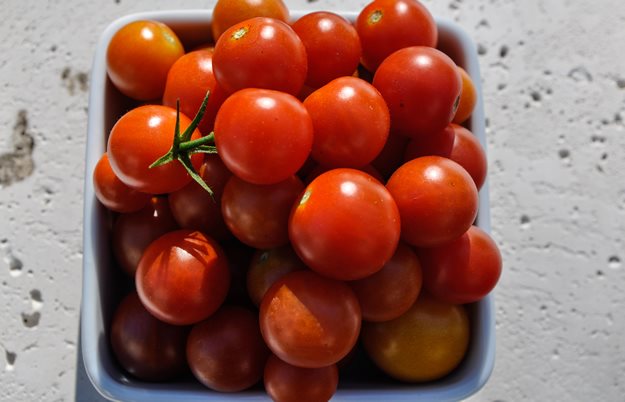
Fox Cherry Tomatoes from Hudson Valley Seed Library are perfectly plump and juicy. They’re perfect either fresh off the vine or on a salad. These came from my garden last August. (Photo by Nick McCullough)
Start seeds indoorsGet started in early spring. With many seeds, it’s recommended that you sow them inside for 6 to 8 weeks before the last frost. (Find your last average frost date by searching online "last frost date [city]".) With a warm window, a self-watering seed tray, and a seed heating pad, you are well on your way to a veggie patch. Starting seeds inside allows plants to get through the juvenile stage and establish a root system before you plant them outside. Because many plants like tomato and peppers take so long before yielding their first fruit, this ensures you will be reaping the fruits of your labor earlier in the summer. Additionally, I use herbs like purple and Thai basil, flat leaf parsley, lemon thyme, oregano, and bronze fennel in my planter designs—this is another group of plants that are easy to start from seed.
Learn more about how to start plants from seed.
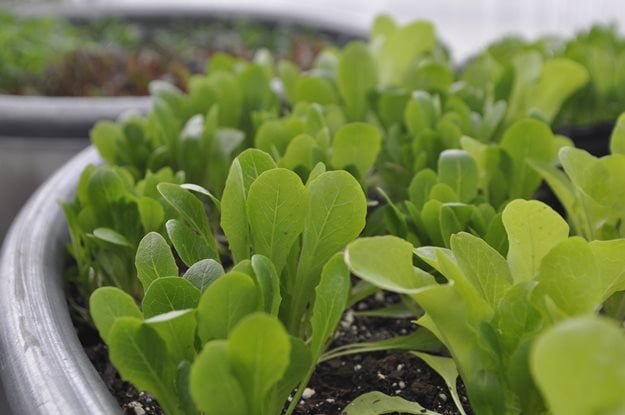
Little Gem Romaine lettuce from Baker Creek Heirloom Seeds is a great selection for a container because of its compact size. Here I have it planted in one of my stock tank planters this spring. Soon, I will thin these seedlings, eat the causalities, and allow the other to grow to maturity. (Photo by Nick McCullough)
Prep the future garden bed.Early spring is a great time to start prepping your planting space. I cannot stress it enough: soil preparation is critical to a healthy, productive garden. In early spring, cool season weeds like chickweed are awake and active. It is important to clear your patch of any cool season weeds before they go to seed. Keep in mind that on average it takes seven years to clear the soil of weeds after it has gone to seed once. A little elbow grease goes a long way later on. After clearing the weeds it’s time to feed your soil with some good organic matter.
Organic matter refers to materials like manure, leaf hummus, and yard compost that help to create and feed the symbiotic relationship of bacteria and fungus in the soil that are key to soil health. In general, veggies are heavy feeders and suck the nutrients from the soil every growing season, so it’s important to replenish the soil with materials like composted leaf hummus, which is my personal favorite.
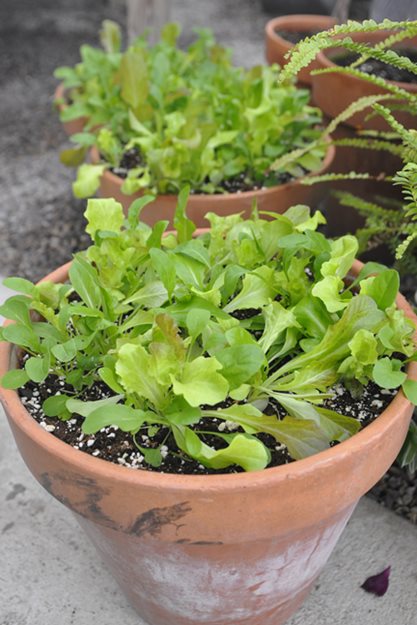
A tasty lettuce collection, the Mesclun Mix from Hudson Valley Seed Library is a must for any spring table. Planting in terracotta pots allows your garden to be mobile so you can bring it inside on cold nights. (Photo by Nick McCullough)
Transplant the seedlings. Once prepped, there are a tasty amount of greens that can tolerate the cooler temperatures quite well. Early spring is the perfect time for arugula, beet greens, kale, sorrel, dock, and chard. I generally sow and protect with a tepee made of plastic. The tepee creates a greenhouse effect, which helps the seeds germinate and protects them on cold nights. Before you know it you’ll be thinning and harvesting your fresh garden goodness.
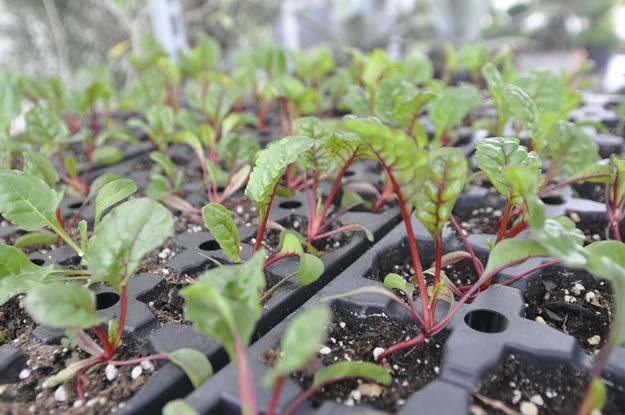
Rainbow Chard, planted in individual cells, will be transplanted into the garden in early April. (Photo by Nick McCullough)
See more from Nick McCullough on his Pinterest page.
RELATED:
Aiming for Aesthetic Edibles
Growing Tomatoes
Growing Vegetables in Pots
